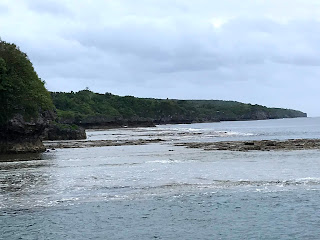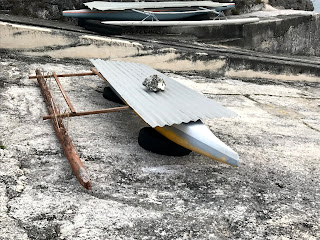At 07.00 this morning we docked in Tahiti,the end of the voyage,but not the holiday.A last breakfast on board and then we walked down the gangplank for the last time,and up another to board a ferry bound for Mo'orea.A large cruise ship was moored close to our small ship.
Pleased that we had not been on that behemoth.
The plaque above shows the shape of Mo'orea,there were volcanos at the apex of both the inward facing arms,and the yellow lizard is present because Mo means lizard and rea yellow.Have not seen one yet.
The island on the other side of the reef is Tahiti,so not far away at all.Once we arrived in Mo'orea we were treated to a panoramic tour
The highest mountain is over 1060 metres and covered in greenery.The island has a lot of pineapple plantations but the main industry is tourism,with about 250,000 visitors expected this year,just back to the same level that was occurring before 9/11.
There are many mango trees with 15 different varieties on the island,and a huge number of wild chickens and roosters.Apparently nobody tries to catch them,the ones from the supermarket taste better!
Having seen all the sights we arrived at the hotel,blue sky,blue sea plenty of fish to see on the reef and a chance to try paddle boarding and run around the lagoon in a kayak.
After which we can take the plunge back at our room
We have another day tomorrow to use the facilities and then we depart,overnight again and Los Angeles again,I do not think it will have improved!!! So I will end here ,hope you enjoyed the journey.



























































